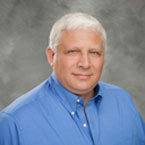 Last week I started a brief series highlighting the distinctions between the four main 3D laminating press technologies, and briefly looked at bladder presses In order to allow for more detail on each, I’ve decided to cover membrane-less presses today and membrane presses next week. (See: 3D Laminating Glossary)
Last week I started a brief series highlighting the distinctions between the four main 3D laminating press technologies, and briefly looked at bladder presses In order to allow for more detail on each, I’ve decided to cover membrane-less presses today and membrane presses next week. (See: 3D Laminating Glossary)
As I mentioned last week, all four of the technologies are often mistakenly referred to as membrane presses. In my early days in 3D laminating it seemed odd that a press without a membrane could be referred to as a membrane press. Recently I’ve noticed an increase in the number of people who err in calling 3D laminate (3DL) a membrane. I’m wondering if membrane-less “membrane presses” are the source of this confusion. You’ll see what I mean in a minute.
A membrane is a highly flexible and durable sheet of natural rubber or silicone that is mounted inside a 3D laminating press. It is not a laminate, but a replacement part on the press. Pressure that is built up behind the membrane forces 3DL that has been softened by heat into the detail of a 3-dimensionally shaped part.
 Membrane-less Presses
Membrane-less Presses
Membrane-less presses use positive air pressure but do not use a membrane. In a membrane-less press the 3D laminate must act as both the laminate and the membrane. A full sheet of 3DL must be used to completely cover the press tray and seal along all edges as the press is closed. This creates separate enclosed chambers above and below the 3DL.
The cycle starts by either using air pressure below the 3DL or vacuum above to bring the material in contact with the upper platen for pre-heating. After the 3DL is sufficiently heated, it is typically drawn down around the parts with vacuum. Air pressure is then injected from above for added profile definition and bond strength.
Membrane-less presses were highly problematic when first introduced. Adhesives used for this process required activation temperatures of 160F to 175F, which proved to be very difficult for membrane-less systems. Without a membrane to act as a heating blanket, the3DL had to hold enough heat when pulled away from the platen to activate the adhesive when it came in contact with the board. The balancing act of activating the adhesive but not overheating the 3DL was quite challenging, often resulting in very high scrap rates.
New low-temp adhesives were later developed, in part to make membrane-less pressing easier. With activation temperatures of around 145F or less, these adhesives made the pressing of 12 mil or thicker 3DL a much easier task. As long as other precautions were taken, good finished product could now be produced without fear of delamination or high scrap rates.
If you are considering buying a membrane-less press or outsourcing from someone that uses one, there are a few factors to consider:
1. Since the security of the membrane is not there, pedestals or pin systems must be very close to the edge of the part in order to support the 3DL and keep it from tearing during the pressure cycle. If the 3DL tears, pressure is lost and the quality of that cycle of parts is suspect at best.
2. Be prepared to use an adhesive with a lower activation temperature. A good low-temp adhesive can still give heat resistance to 190F and higher. Using adhesives that activate at higher temperatures (160F +) may require overheating the 3DL, leading to changes in texture, gloss and color, not to mention leaving wrinkles on the surface of the part.
3. Membrane-less presses require very careful spacing of parts and corner blocks to eliminate small folds at the bottom of each corner, commonly called “dog ears”. It is very time consuming, but if extreme caution isn’t taken to prevent them, these folds represent an unsealed area where moisture can get into the MDF and cause failure.
There are several successful companies that are using membrane-less presses. If you are looking to outsource from someone using this type of system, make sure they’re addressing these issues and keep an eye on the corners.
Next week I’ll be covering positive pressure membrane presses. There are some significant variations among them as well so come back ready to learn.






Have something to say? Share your thoughts with us in the comments below.